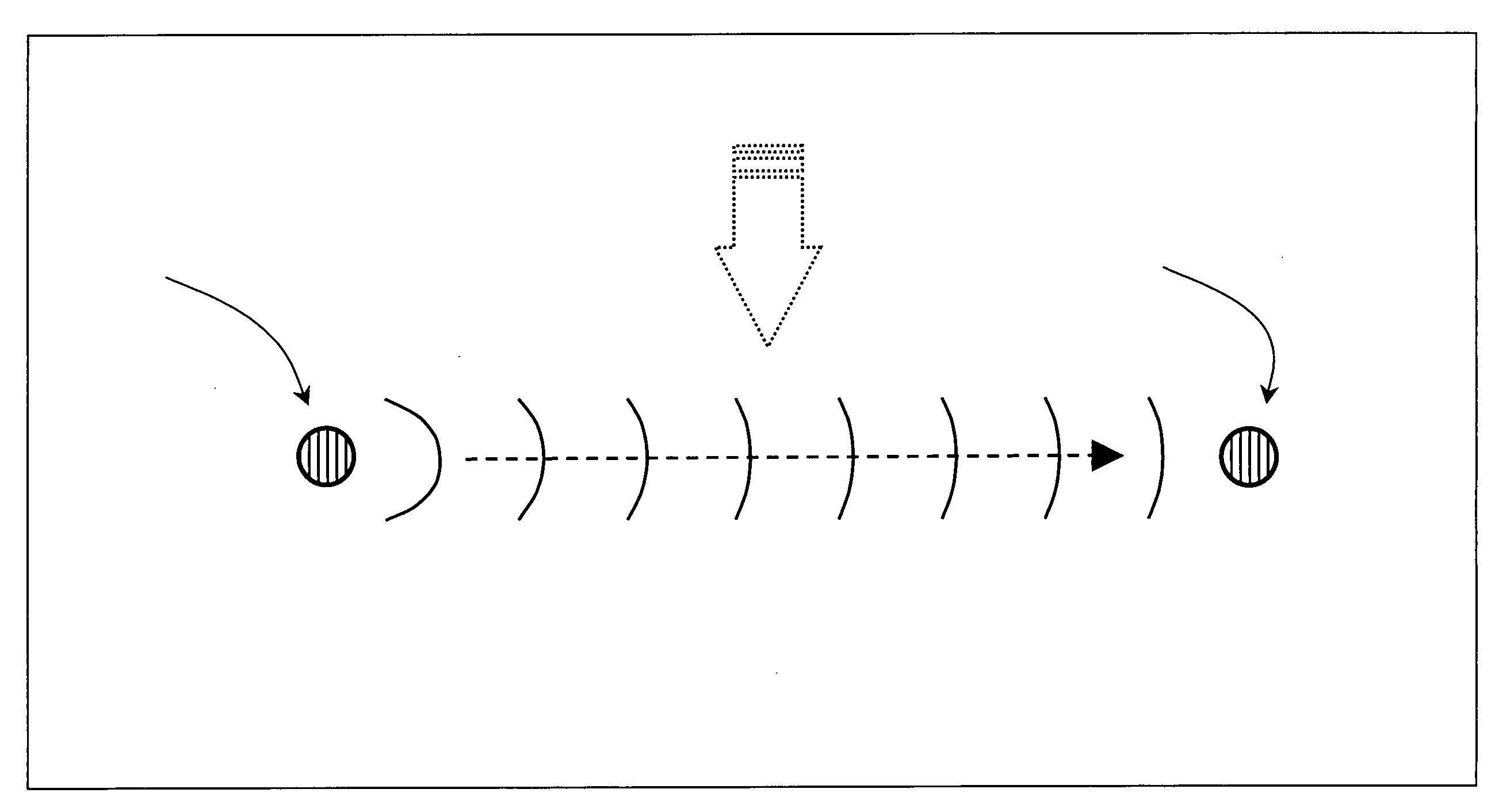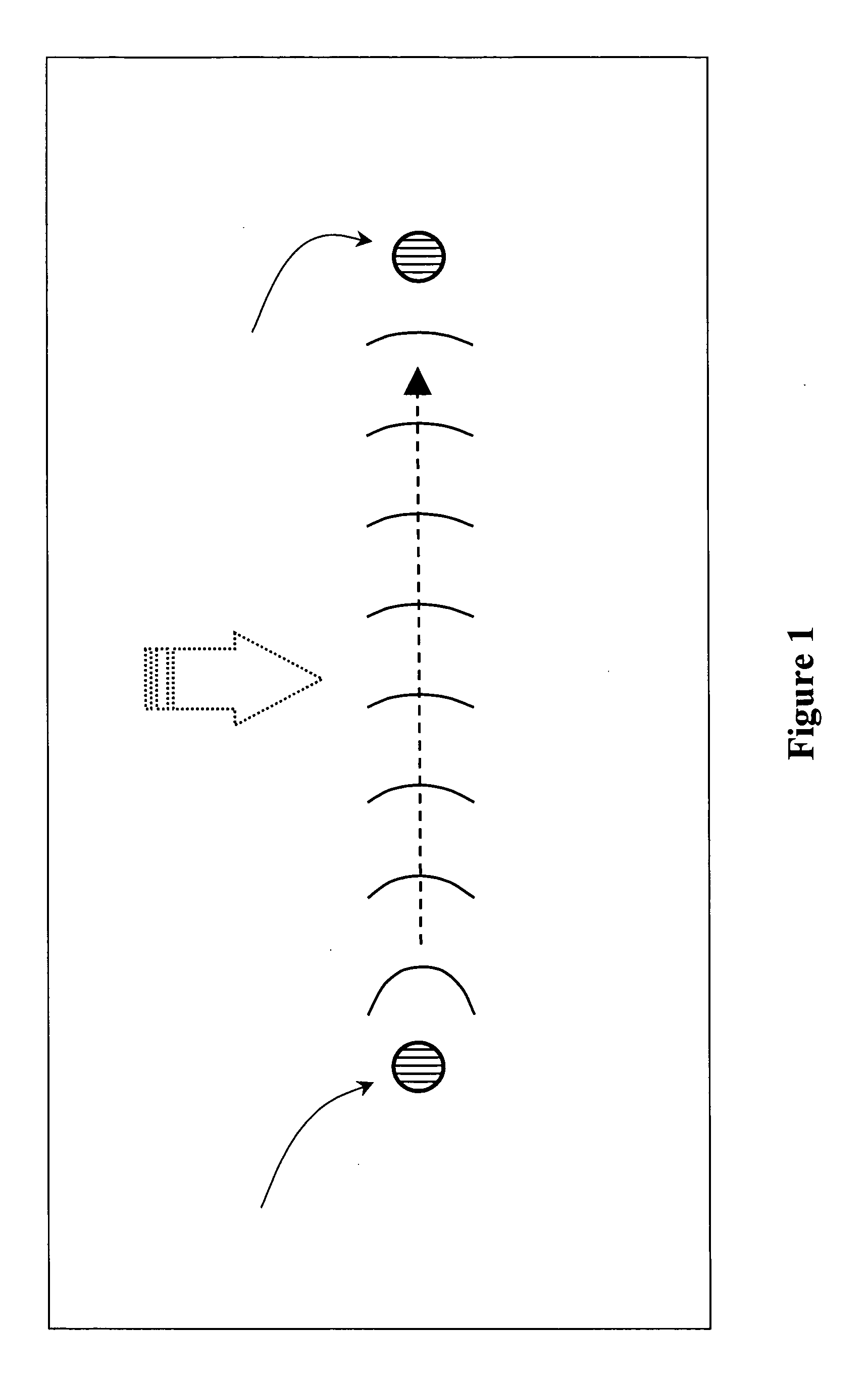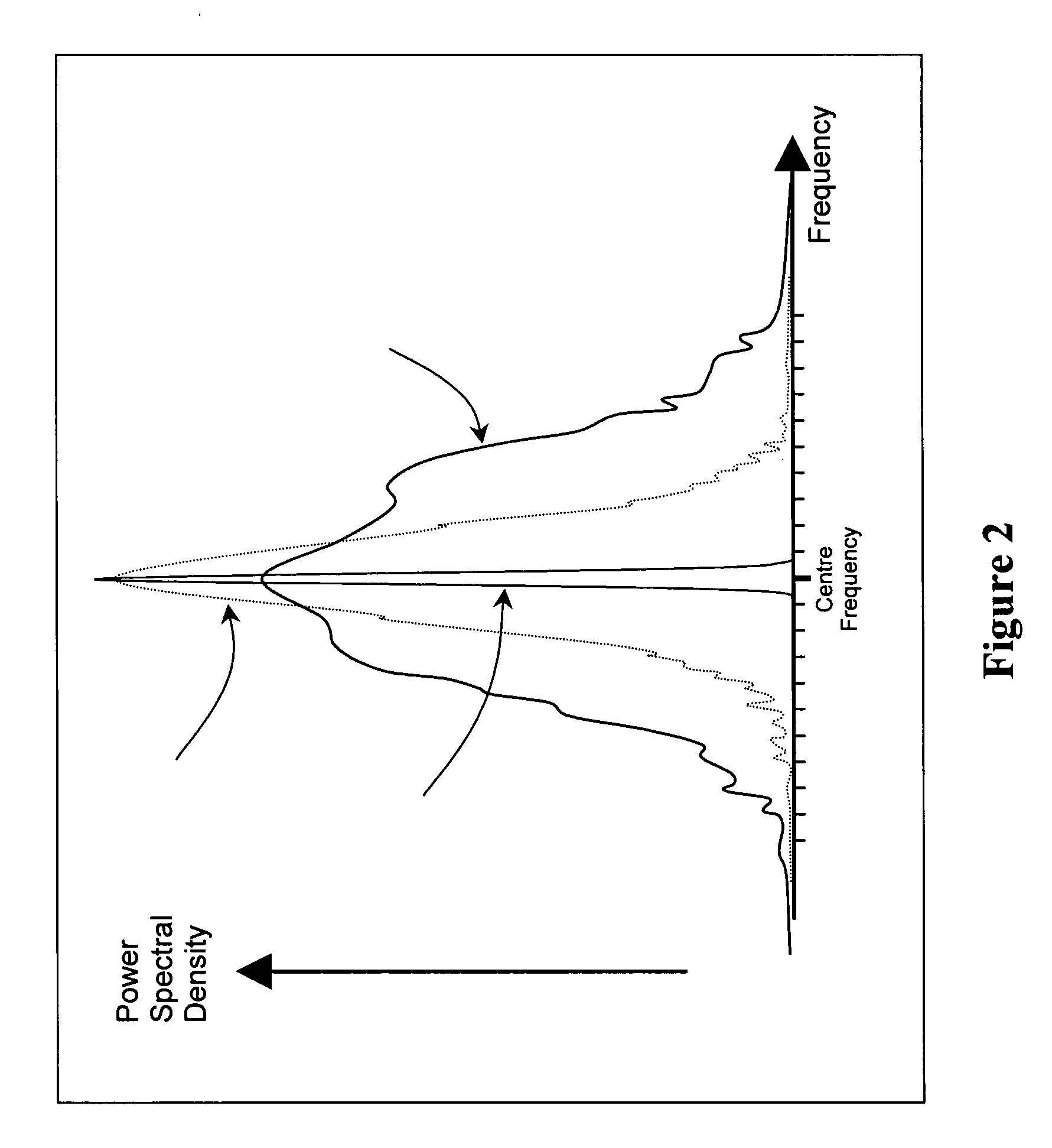System for Detection of Underwater Objects
a detection system and object technology, applied in the direction of burglar alarm short radiation actuation, burglar alarm electric actuation, instruments, etc., can solve the problem that the detection of objects underwater has been difficult to solve, the technique dependent on a reflected signal is not usually viable underwater, and the received signal is usually too weak to be detected at useful ranges, etc., to achieve the effect of sufficient range, resolution and speed
- Summary
- Abstract
- Description
- Claims
- Application Information
AI Technical Summary
Benefits of technology
Problems solved by technology
Method used
Image
Examples
Embodiment Construction
[0025]FIG. 1 shows one span of a multi-span security fence that has a transmitter with a transmit antenna 1, which is submerged in water, and a receiver with a receive antenna 2, also submerged. The region between the transmitter and receiver forms an elongated fence 3. The antenna may be of any suitable form, for example a magnetic coupled antenna, preferably based on loops or solenoids. The solenoid may be formed around a high magnetic permeability material. The insulated antenna may be surrounded with a low conductivity material with permittivity matched to that of the propagation medium e.g. distilled water. A signal emanating from the transmit antenna 1 passes through the region of the elongated fence 3 and is detected by the receive antenna 2. The transmitter operates continuously. By monitoring the received signal, perturbations or changes caused by the presence of an intruder 4 can be detected.
[0026]It will be understood that the wave does not propagate along a direct narrow...
PUM
 Login to View More
Login to View More Abstract
Description
Claims
Application Information
 Login to View More
Login to View More - R&D
- Intellectual Property
- Life Sciences
- Materials
- Tech Scout
- Unparalleled Data Quality
- Higher Quality Content
- 60% Fewer Hallucinations
Browse by: Latest US Patents, China's latest patents, Technical Efficacy Thesaurus, Application Domain, Technology Topic, Popular Technical Reports.
© 2025 PatSnap. All rights reserved.Legal|Privacy policy|Modern Slavery Act Transparency Statement|Sitemap|About US| Contact US: help@patsnap.com



